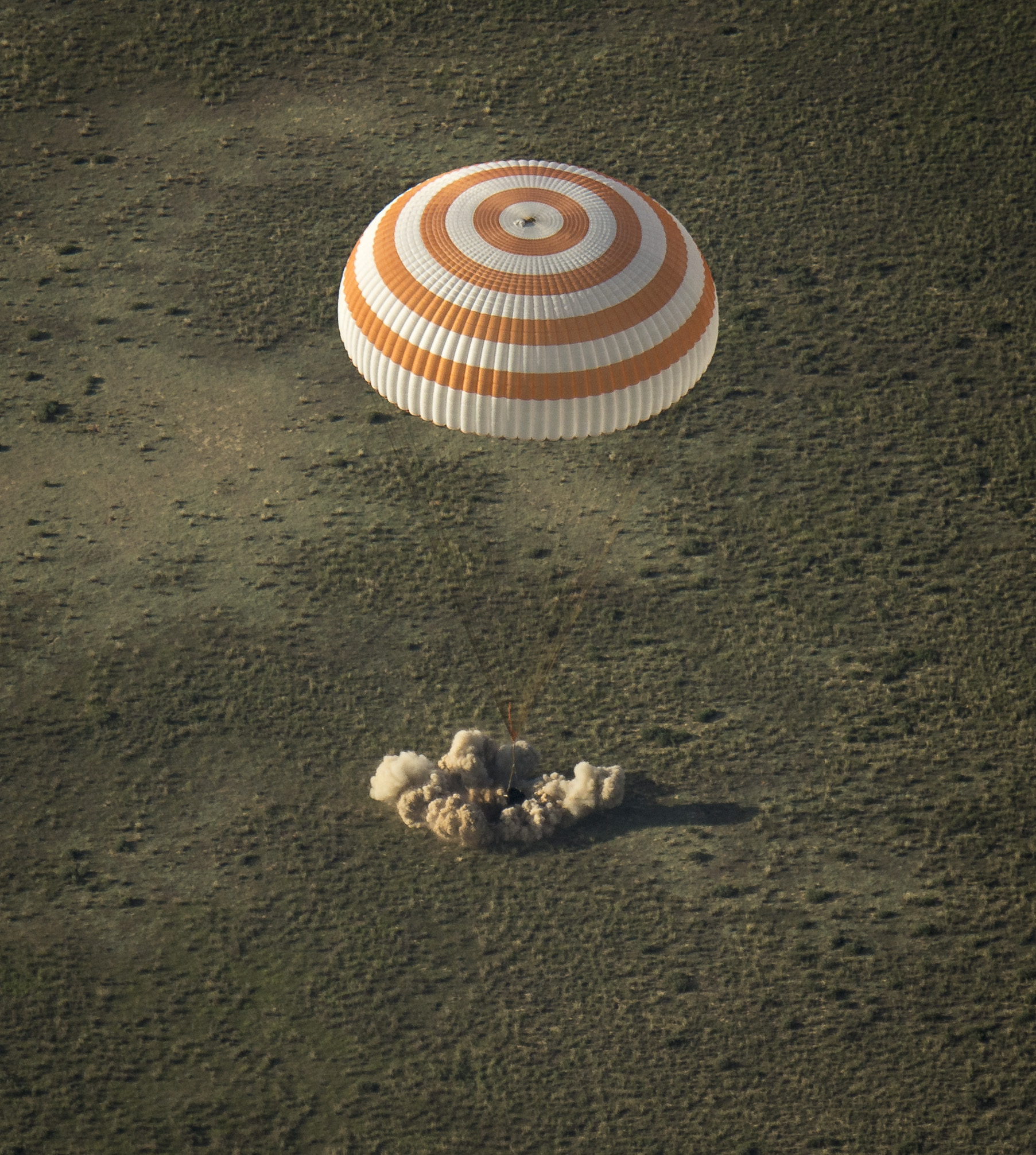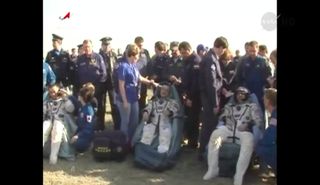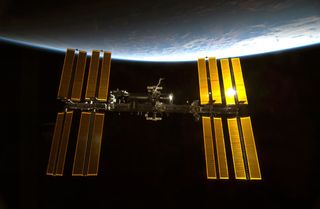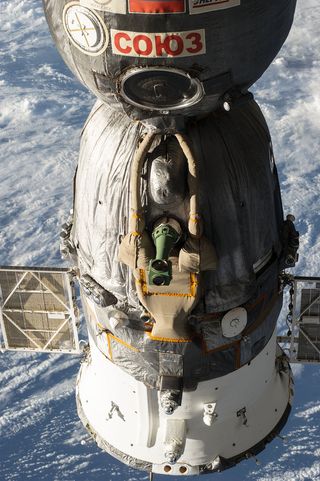
Three crewmembers of the International Space Station have returned safely to Earth, ending their six-month orbital mission.
A Russian Soyuz capsule carrying NASA astronaut Rick Mastracchio, Japanese spaceflyer Koichi Wakata and cosmonaut Mikhail Tyurin landed on the steppes of Kazakhstan at 9:58 p.m. EDT Tuesday night (May 13; 7:58 a.m. local time on Wednesday, May 14).
The Soyuz undocked from the space station 3 1/2 hours earlier while the two vehicles were above Mongolia, marking the end of Expedition 39 and the beginning of Expedition 40 aboard the orbiting lab. [Expedition 39 Returns to Earth (Photos)]

"What an exciting time we shared in this increment," Expedition 39 Commander Wakata said Monday (May 12) as he handed the station's reins over to NASA astronaut Steve Swanson. "Congratulations, and best wishes to the crew of Expedition 40 for a successful mission."
Wakata, Mastracchio and Tyurin enjoyed an eventful and historic stint in orbit after arriving at the space station on Nov. 7, 2013. For example, Wakata became the first Japanese person ever to command the station when he took charge of Expedition 39 on March 10.
Just four days later, Wakata and Mastracchio participated in "Live from Space," a two-hour TV event hosted by Soledad O'Brien that aired on National Geographic Channel, as well as Channel 4 in the United Kingdom. "Live from Space" gave viewers in more than 140 countries an idea of what it's like to live and work on the orbiting lab, with Wakata giving a guided tour of the $100-billion complex.

"It is true that it is unprecedented," former NASA astronaut Ron Garan said of the project at the time. "I've never seen any kind of access like this before. Typically, live events from space run 15 minutes, 20 [minutes] tops. Two hours is just unbelievable."
Get the Space.com Newsletter
Breaking space news, the latest updates on rocket launches, skywatching events and more!

Expedition 39 also oversaw the arrival of SpaceX's robotic Dragon capsule, which launched toward the space station April 18 on the California-based company's third contracted cargo mission for NASA. (SpaceX holds a $1.6 billion deal to make 12 such flights for the agency.)
Wakata, Mastracchio and Tyurin zipped around Earth 3,000 times during their 188 days in space, traveling more than 78 million miles (127 million kilometers), NASA officials said.
Expedition 40 will start with a skeleton crew that includes Russian cosmonauts Alexander Skvortsov and Oleg Artemyev, in addition to Swanson.
But the space station will soon be up to full strength once again. Three new crewmembers — NASA's Reid Wiseman, cosmonaut Max Suraev and Alexander Gerst of the European Space Agency — are slated to blast off from Baikonur Cosmodrome in Kazakhstan on May 28.
Follow Mike Wall on Twitter @michaeldwall and Google+. Follow us @Spacedotcom, Facebook or Google+. Originally published on Space.com.
Join our Space Forums to keep talking space on the latest missions, night sky and more! And if you have a news tip, correction or comment, let us know at: community@space.com.

Michael Wall is a Senior Space Writer with Space.com and joined the team in 2010. He primarily covers exoplanets, spaceflight and military space, but has been known to dabble in the space art beat. His book about the search for alien life, "Out There," was published on Nov. 13, 2018. Before becoming a science writer, Michael worked as a herpetologist and wildlife biologist. He has a Ph.D. in evolutionary biology from the University of Sydney, Australia, a bachelor's degree from the University of Arizona, and a graduate certificate in science writing from the University of California, Santa Cruz. To find out what his latest project is, you can follow Michael on Twitter.










